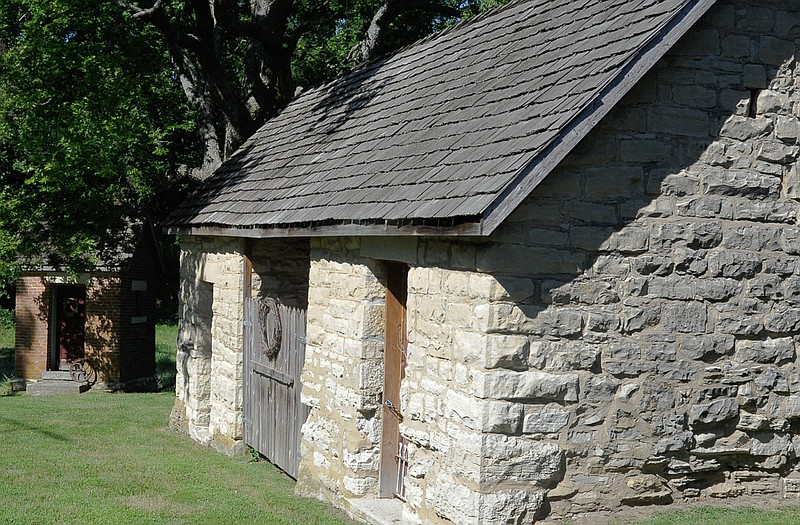Like many pioneers of the 1850s, Louis Bruce brought his wife and eight children with him from Virginia to start a farmstead in central Missouri.
The Louis Bruce Farmstead Historic District/Rock Enon Farm was listed on the National Register of Historic Places in 1991.
A miller in Fauquier County, Virginia, Bruce may have set out to plant a vineyard, but instead invested in a granary to raise horses and grow crops, said current owner Carolyn Green.
The family arrived about 1858, buying up 440 acres in the next two decades. The heart of the operation remains virtually intact on the remaining 10 acres, commonly called Rock Enon Farm.
"It exhibits a high level of integrity; the buildings, their relationship to each other, and their relationship to the surrounding countryside, remain virtually unchanged from the period of significance," the nomination said.
Remnants of the first structure - a modest log cabin - were found where the Greens' flag pole is today.
Markings tell that the barn was completed in 1870, the spring house in 1871 and the large house in 1872.
The original, brick outhouse with walnut seats and plaster walls has two adult holes and a child-sized hole.
"It was a pretty nice outhouse at the time," Green said.
Other original structures include the smokehouse and granary. The front yard also retains the stone retaining wall with iron gate and carriage steps.
"These buildings housed activities which played an important role in the everyday operation of the farm, and their proximity to the house indicates their functions as being household oriented," the nomination said. "The fact that they are of the same high quality construction and durable material as the house indicates their importance to the overall farm operation."
The Bruce family farm reflected the transition from the "era of the axe" to more modern agricultural practices of the day. Agricultural census records say the farm produced 1,500 bushels of Indian corn in 1860.
Bruce also owned two warehouses in High Point, where the Jefferson City to Bagnell Railroad line went through. This suggests he had the means not only for production, but also to process and ship to market, the nomination said.
Bruce set up each of his six children, who survived to adulthood, with land. And in 1880, the home passed to a son. The Bruce family is buried in a small, fenced cemetery nearby.
Route V dissects the original farmland, following the path of the old Jefferson City to Springfield stage line.
The common name, "Rock Enon" is shared with the spring-fed creek and the former church building. It refers to "a place with much water" from John 3:23.
The first Baptist church in the area began meeting at this location in 1847 and built the now-removed stone church in 1878. Louis Bruce is credited with donating the stone, which is similar to that used for his buildings from a quarry on the site.
Louis Bruce Farmstead Historic District/Rock Enon Farm
Address: Route V
Listed on National Register: 1991
Architectural style: Georgian Plan I-house
Date of significance: 1870-76
Size: about 10.6 acres
Owner: Rich and Carolyn Green
Rock Enon Farm dates to late 1850s

